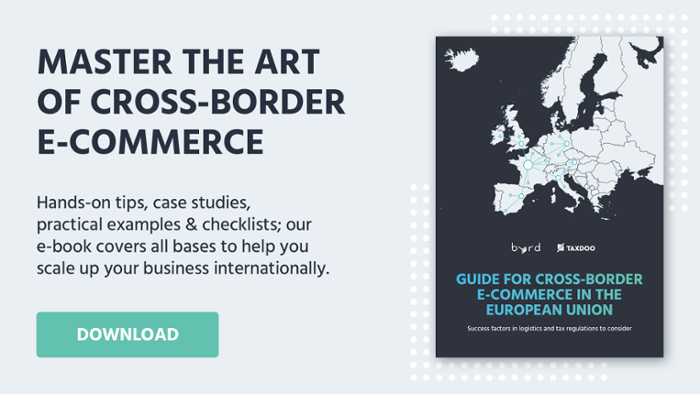Export Accompanying Document (EAD)
Imagine making international trade simpler while ensuring your goods cross borders without a hitch. The Export Accompanying Document (EAD) does exactly that. In this blog post, we’ll explain everything you need to know about the EAD, highlighting its importance and showing you how to use it effectively.
An Export Accompanying Document, often referred to as an export declaration, provides proof that goods are being exported abroad. It includes vital details such as:
- Type, quantity, and value of the exported goods
- Destination
- Exporter
- Recipient
- Shipping route
- Mode of transportation
Why is the Export Declaration Necessary?
Thhe EAD helps customs ensure proper clearance and supervision of exports. For exporters, it provides a means to track the type and use of exported goods. Additionally, it is often required to qualify for export subsidies or tax benefits and can be used as a trade document to facilitate business transactions, ensuring all necessary paperwork is in place.
When Do You Need to Create an Export Accompanying Document?
There are several instances where an EAD is required. For example, it is essential when exporting goods from the European Union (EU) to non-EU countries, such as shipping from Germany to Switzerland. An EAD is crucial for certain items like weapons, chemicals, or hazardous materials. However, there are exceptions. Some goods may be exempt from export controls or benefit from free trade agreements that simplify the process. Generally, for goods worth up to €1000 and weighing up to 1000 kg, an EAD is not required.
It's important to familiarise yourself with the specific requirements for exporting goods to ensure all documents are correctly prepared.
How Much Does an Export Accompanying Document Cost?
The cost of an export declaration varies depending on factors such as customs agents, the number of declarations, and the number of items. On average, costs range from €15 to €40 per export shipment.
How Do I Create an Export Accompanying Document?
For several years now, the procedure is exclusively online and requires a direct interface with customs. Here’s a step-by-step guide to export declaration. Note that this might differ from country to country:
Step 1: Gather the required information
Before creating the EAD, collect all necessary information related to the shipment. This includes details about the exporter, importer, goods being shipped, and any relevant supporting documentation. Ensure you have the following information:
- Exporter's name, address, and contact details.
- Importer's name, address, and contact details.
- Description, quantity, and value of the goods.
- Harmonized System (HS) codes for the goods (used for customs classification).
- Country of origin of the goods.
- Invoice or commercial invoice.
- Transport details, including the mode of transportation, vessel/flight number, and expected arrival date.
Step 2: Determine the Correct EAD Type and Specific Requirements
The type of EAD needed depends on the value and nature of the goods being exported. There are various types of EADs, including the Single Administrative Document (SAD) and the simplified procedure (if applicable). Consult with your local customs authority or shipping agent to determine the correct type of EAD for your shipment.
Step 3: Create the EAD
- Section 1: Exporter's details: Provide your name, address, and contact information as the exporter.
- Section 2: Consignee's details: Provide the importer's name, address, and contact information.
- Section 3: Goods description: Describe the goods being exported, including their quantity, value, HS codes, and country of origin. Include any unique characteristics or additional details that customs may need to know.
- Section 4:
Transport details: Enter the mode of transport, vessel/flight number, and expected arrival date at the port of entry. - Section 5: Declarations: Sign and date the document, certifying the accuracy of the information provided.
- Section 6: Supporting Documentation: Attach any necessary supporting documents, such as the commercial invoice or packing list.
Step 4: Review the Document
Carefully review the Export Accompanying Document to ensure accuracy and completeness. Verify compliance with applicable regulations and ensure all required documentation is attached.
Step 5: Submit the Export Accompanying Document
Submit the EAD to the relevant authorities before the goods leave the country. Ensure all necessary documents are included.
Step 6: Track Shipment and Monitor Customs Clearance
After submitting the EAD, track your shipment's progress and monitor the customs clearance process. Stay in contact with your shipping agent and customs authority to address any issues or provide additional information if needed.
Step 7: Receive Confirmation and Deliver Goods
Once customs clearance is complete, you will receive confirmation from the customs authority or your shipping agent. At this point, you can proceed with delivering the goods to the importer in the destination country.
It is important to note that the exact requirements and procedures for preparing an Export Accompanying Document may vary depending on the country and the type of goods. It is therefore advisable to find out about the specific requirements in advance and, if necessary, seek professional help to ensure that all documents are prepared correctly. For instance, the e-commerce fulfilment company byrd will be happy to provide support.
Conclusion
The Export Accompanying Document (EAD) is an essential tool for businesses looking to export goods. It serves as proof of export and is required by customs authorities. The EAD enables exporters to track their goods and benefit from export subsidies or tax incentives.
It's crucial to understand the specific requirements for exports and, if necessary, seek professional assistance to ensure accurate document preparation.
If you have questions or need support with e-commerce fulfilment, we're always here to help.
